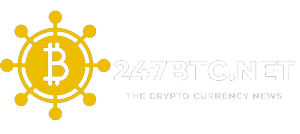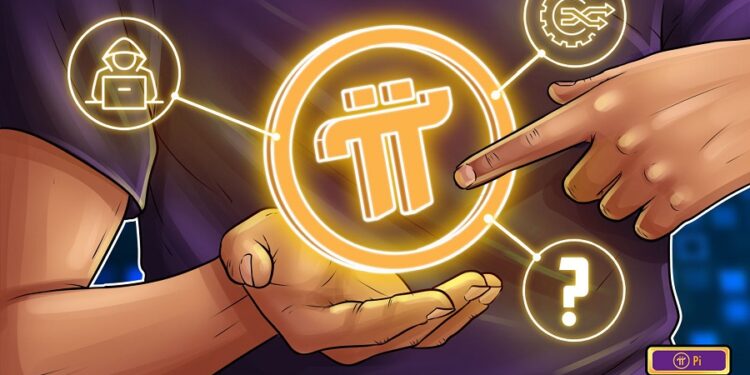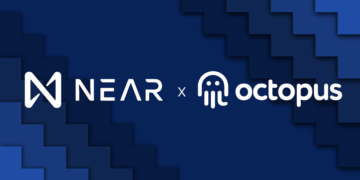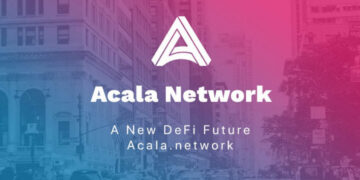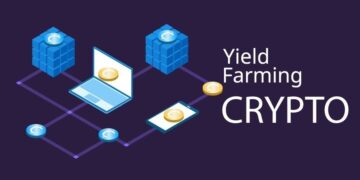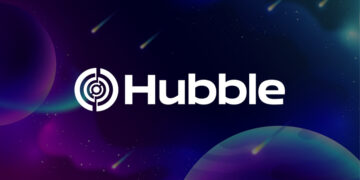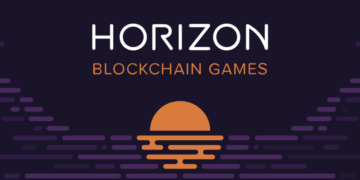The cryptocurrency sector has a history of unscrupulous practices and fraudulent activities. Whenever a new blockchain or currency emerges, potential stakeholders are required to assess the possibility of being swindled. The Pi Network, an expanding cryptocurrency enterprise, is currently under scrutiny concerning its credibility.
So, what is the Pi Network, and is it a scam?
Table of Contents
ToggleWhat Is the Pi Network?
Nicolas Kokkalis and Chengdiao Fan, two students from Stanford University, established the Pi Network in 2019, offering users an app, coin, and a multi-level marketing (MLM) program, which has generated controversy.
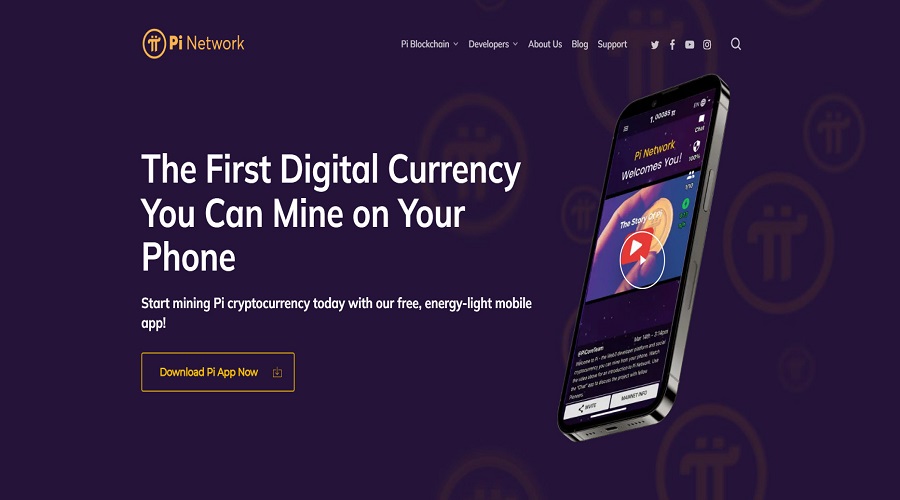
The official website of Pi Network describes their service as a mobile app that simplifies crypto mining by enabling users to mine on their smartphones. Moreover, it is claimed on the site that this function can be performed conveniently without significantly draining the phone’s battery.
Familiarity with crypto mining entails understanding the exorbitant expenses involved in procuring specialized equipment that consumes vast amounts of energy. This high cost poses a significant barrier to entry for most individuals; however, the Pi Network’s unique feature of enabling smartphone mining has garnered significant attention and interest.
The Pi Network app is available for free on both Android and iOS devices and enables users to mine cryptocurrency while also monitoring their metrics. To learn more about the app’s features and capabilities, let us examine what it has to offer in greater detail.
The Pi Network App
In order to utilize the Pi Network app, it is necessary to first install the application and subsequently sign up for an account. To do so, individuals can use their Facebook account or input their phone number. They must also provide their first and last name, along with selecting a desired username and password. After these steps have been completed, users can begin utilizing the application by following the brief tutorial provided.


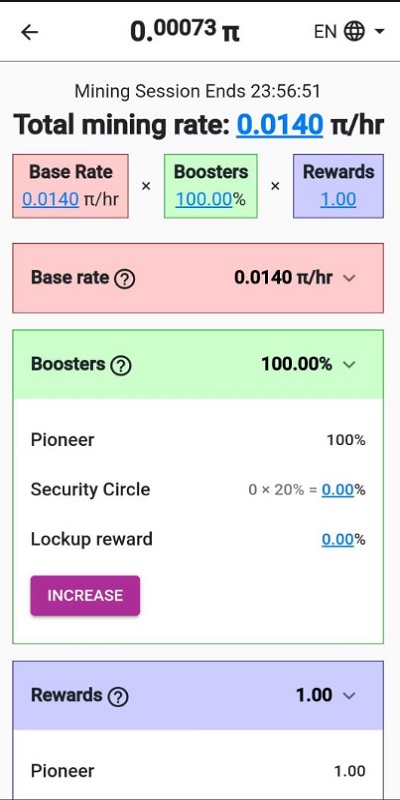
As evident above, the Pi app may be considered rudimentary; however, this does not necessarily indicate substandard quality. With the application’s menu, users can easily access details such as mining profits, the Pi Network whitepaper, and frequently asked questions. To continue mining with the Pi Network app, it is essential to regularly engage with the app every 24 hours.
Upon signing in to the Pi app, one will quickly become aware that invitations and referrals are fundamental aspects of the network. During the sign-up process, individuals are prompted to disclose if they were referred by someone, and once they are logged in, they have the ability to utilize their unique invite link or code to refer others to the Pi Network. The emphasis placed on invites is due to the requirement that an individual must be referred by someone else in order to mine Pi coins. Additionally, inviting other members to the Pi Network results in the potential to earn more Pi coins.
The Pi Network app offers different roles for its users. As a Pioneer, one can mine Pi coins every day by tapping the dedicated mining button in the app within a 24-hour interval. Individuals who take on the Contributor role must invite three to five people into a secure circle to receive an extra 0.2 PI per hour. On the other hand, Ambassadors must use their referral code to invite new members to join the Pi Network app. As an Ambassador, for every new member recruited, a 25% mining bonus is granted.
Finally, an option available to you is to assume the role of a Node, which is a function that aligns more closely with the conventional practice of cryptocurrency mining. As a Node, your computer will be utilized to verify transactions that are conducted on a blockchain.
The Pi Network’s MLM factor, which we will elaborate on shortly, is brought into play through its invitation system and diverse profile levels.
What Is the Pi Cryptocurrency?
The Pi cryptocurrency functions as the primary currency of the Pi Network blockchain, which can be obtained through the Pi app via mining. Due to its nature as a digital currency, Pi operates on a blockchain platform. The Pi blockchain employs the Stellar Consensus Protocol as its consensus mechanism, which was initially created for the Stellar (XLM) blockchain.

At present, a single Pi coin possesses an estimated value of $58, although it should be emphasized that the worth of digital currencies is inherently unstable, rendering them prone to sudden surges and downturns. Additionally, PI is presently exhibiting considerable volatility, as its value fluctuates on a daily basis, sometimes surpassing ten dollars, which substantively impacts the coin’s overall worth.
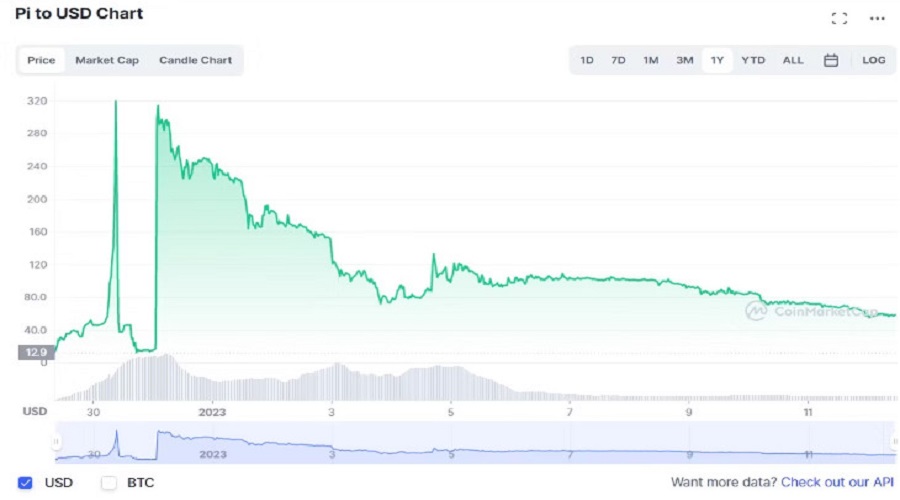
In addition to its role as a mining reward, Pi serves as a utility within the Pi Network by being utilized as a means of payment for covering transaction fees.
At present, Pi coins are unavailable on any legitimate exchange due to the fact that the network is still in Enclosed Mainnet. Consequently, trading Pi anywhere is not possible. This restriction significantly hampers the use of Pi; however, as the project advances, the situation may change in the future.
Is the Pi Network Safe? Is Pi Network a Scam?
The Pi Network has been embroiled in a significant controversy related to its alleged status as a multi-level marketing scheme (MLM). This marketing model mandates individual recruitment of new members or employees, instead of relying on the company’s ability to hire new employees directly. Incentivizing new members to join with promises of more Pi coins remains a hallmark of the program, but it also raises doubts in the minds of many regarding whether the Pi Network is promoting a pyramid scheme.
The Pi Network’s mining scheme raises concerns with regards to the inability to withdraw mining profits due to the current Enclosed Mainnet status. According to Pi’s developers, the network will transition to Open Mainnet at an unspecified time in the future. Consequently, the exact date of when the Pi Network will be fully operational remains unclear.

The legitimacy of the Pi project may be called into question due to the absence of the Pi asset on any exchange. However, this is because the Pi Network is currently operating in an Enclosed Mainnet rather than an Open Mainnet. It is important to note that the Pi Network has warned against certain exchanges falsely listing Pi without the proper authorization, and interested parties should exercise caution accordingly.
The Pi Network employs KYC protocols to authenticate the identities of prospective users, with successful candidates potentially gaining admittance to the Open Mainnet. This development is largely laudable for the Pi Network, yet there are concerns about the excessive promotional efforts for the Open Mainnet upgrade on various social media platforms, as this approach is a common tactic utilized by fraudulent cryptocurrency endeavors to entice unwitting investors.
Despite certain worries surrounding the Pi Network’s multi-level marketing framework, utilizing the app does not involve any potential financial hazards. There is no requirement to furnish payment information or commit any monetary assets in order to engage in Pi mining. However, as previously indicated, the necessity to disclose either one’s phone number or Facebook account linkage is a potential vulnerability if the authenticity of the Pi Network should be in question.
Questions Surrounding the Pi Network Still Remain
The accessibility of withdrawing and using PI funds on an exchange following the launch of the Pi Network’s Open Mainnet remains uncertain. Moreover, concerns are raised regarding the project’s multi-level marketing structure. The legitimacy of the Pi Network is yet to be determined and it remains to be seen whether it will be a reliable cryptocurrency venture or another dubious scheme. Only time will reveal the true nature of the project.
What is Stader Labs (SD)? A comprehensive guide to SD cryptocurrency
What is Stader Labs? Stader Labs is a multichain Liquid Staking platform that enables users to participate in staking while...
Read moreWhat is DeFi Land (DFL)? A comprehensive overview of the digital currency DFL
DeFi Land is a simulated farming game developed to gamify the DeFi ecosystem on Solana, however, the current state of...
Read moreWhat is Friend.tech? Overview of the electronic currency Friend.tech
The Base is a layer constructed by the Coinbase team that has been mainnet for a considerable amount of time...
Read moreWhat is Highstreet? Complete information about HIGH & STREET Token
The ongoing explosive growth of Metaverse is anticipated to continue through the end of 2021, and it is predicted to...
Read moreWhat is Ancient8 (A8)? Complete information about A8 cryptocurrency
The robust growth of Axie Infinity and the GameFi model in general in 2021 remains a topic of utmost importance...
Read moreWhat is Yield Guild Games (YGG)? This comprehensive article elucidates the intricacies of the YGG cryptocurrency
The recent surge of the Trend Play to Earn phenomenon has provided a launching pad for numerous game development projects...
Read moreWhat is Lido DAO? A comprehensive overview of the LDO Token cryptocurrency
Numerous projects utilize Staking as a solution for reducing supply and voting proposal. However, as a consequence, staked assets are...
Read moreWhat is Octopus Network (OCT) ? A comprehensive overview of the OCT cryptocurrency
The NEAR Protocol currently hosts an immensely significant project for its ecosystem, which regrettably has yet to garner the attention...
Read moreWhat is Acala Network (ACA)? Overview of the cryptocurrency ACA coin
Acala Network has recently gained significant attention from the community. The project's success in winning the first Parachain on Polkadot...
Read moreWhat is Yield Farming? Gain a comprehensive understanding of the terminology associated with Yield Farming
The concept of Yield Farming, prominent Yield Farming platforms, and the associated risks and opportunities are explored in this article,...
Read moreWhat is Ripple ( XRP coin )? An general introduction to the Ripple coin
Bitcoin is the largest digital currency in the world, with a limit of 21 million units, and it is well-known...
Read moreWhat is Slingshot Finance? A comprehensive overview of the digital currency Slingshot Finance
Slingshot Finance is an innovative DeFi application that offers a wide range of services related to cryptocurrency asset exchange and...
Read moreWhat is Ondo Finance (ONDO) ? Overview of the Ondo Finance token
The Ondo Finance DeFi platform recently announced the successful raising of $20 million in capital from major funds such as...
Read moreWhat is Hubble protocol (HBB)? A comprehensive guide to the cryptocurrency HBB
The Hubble Protocol represents a pioneering project within the Debt Protocol arena, as it provides users with collateral asset support...
Read moreWhat is Horizon Land Metaverse? Detailed information on the world of Horizon Land Metaverse
The potential for blockchain-based gaming has been recognized, with Horizon Blockchain Games being one company that launched its first game...
Read more